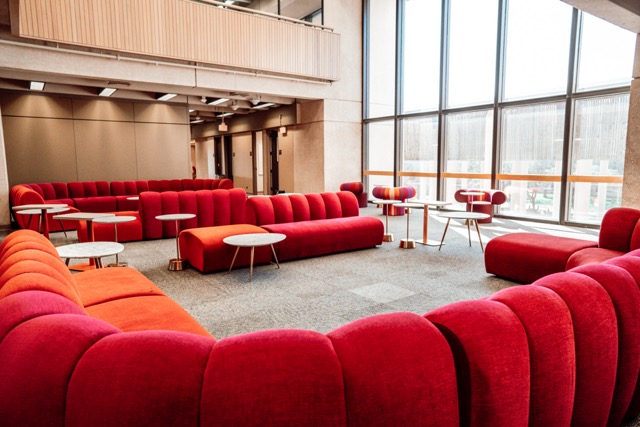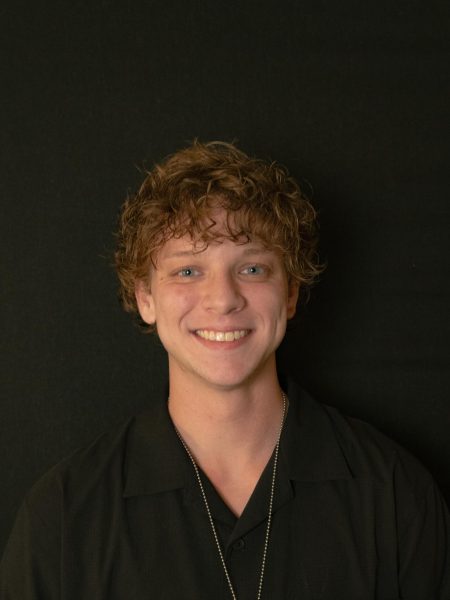Next phase of JPL renovation will include cutting down on in-house book storage
January 31, 2023
Last semester, phase one of the Heart of the Campus Project was completed with the installation of floor-to-ceiling windows on the John Peace Library’s (JPL) third floor. As previously reported by The Paisano, the project’s next phase involves evaluating on-site books, removing stacks, adding new furnishings and recarpeting. This will be followed by cutting down on the university’s in-house book collection.
University Librarian Dean Hendrix and his team have collected feedback about the project from students multiple times, including through LibQUAL and focus groups with students.
“We’re talking about valuable space … students telling us they need more study space; students telling us they need more collaboration space,” Hendrix said. “We have this physical building … the JPL is a block of concrete; you can’t blow out a wall and easily create more space. So we have to work within the confines of the floor plan.”
The team has also presented its plans and data about the library’s collection usage to various groups, including the Academic Council, the Faculty Senate and Student Government Association.
“We’ve talked to all these constituents and continue to talk to them,” Hendrix said. “We’ve had individual conversations with faculty members that may have some concerns.”
“We [had] some faculty that said [they’d] … like to have an individual meeting, but once we had those individual meetings [and] they got to ask their individual questions about their individual research area, then they felt fine with it,” Hendrix added.
A disciplinary approach is being taken when considering and evaluating which books will be housed at the JPL. For example, disciplines like chemical engineering, whose materials Hendrix describes as being mostly digitized and online, would not require having a considerable on-campus inventory.

On the other hand, materials pertaining to disciplines like languages and philosophy, where “monograph is still an important part of the research process,” will not be removed in considerable numbers. The same will be true for disciplines like art and art history, where color in books cannot be digitally replicated effectively.
“So, anything where the experience or the research or where the physical material is superior … then we’re making every effort to make sure that that’s kept on site,” Hendrix said.
The fate of books selected for removal will be evaluated using a flow chart based on the frequency of checkout, availability of books at other libraries in the university’s loan network and whether the book is available in a digitized format. Books will then either be deaccessioned, donated to Better World Books or moved to other locations like the Downtown Campus library or the Institute of Texan Cultures. Books can also be sent to the Joint Library Facility (JFL), a collaborative storage facility for the Texas A&M university system and the UT system.
In the event that a student or faculty requires a physical book that is not stored in-house, the university’s free-of-cost Get It For Me service can request to borrow the book from its library loan network or the JFL.
Since the third floor of the JPL has been closed for quite some time during phase one of the project, Hendrix explained that the library would like to keep the third floor of the JPL open so students can enjoy it for a while before phase two commences.
“We don’t want to just roll right into another [project],” Hendrix said.
The project’s overall goal is to renovate the library’s third floor, making it a 21st-century workspace where students can come together and collaborate. Despite this reimagining of the space, Hendrix explained that the library would provide additional private study spaces to students who need them — an initiative that is not part of the Heart of the Campus Project.
“We also understand that there’s a need for private study space … and we are working on another piece of the fourth floor where we’re gonna open up some [former staff offices] … and make them into study rooms,” Hendrix said. “We [are] trying to balance all the needs and all of the feedback that we’ve got [from] students.”
“Everything we do is about students; at the end of the day, that’s what our goal is — to make sure that our students have a 21st-century library that they feel ownership over and that [gives] them the research, teaching and learning materials that they need.”
More information about the Heart of the Campus Project can be found at https://lib.utsa.edu/about/strategic-plan/third-floor-reopening-faq.









